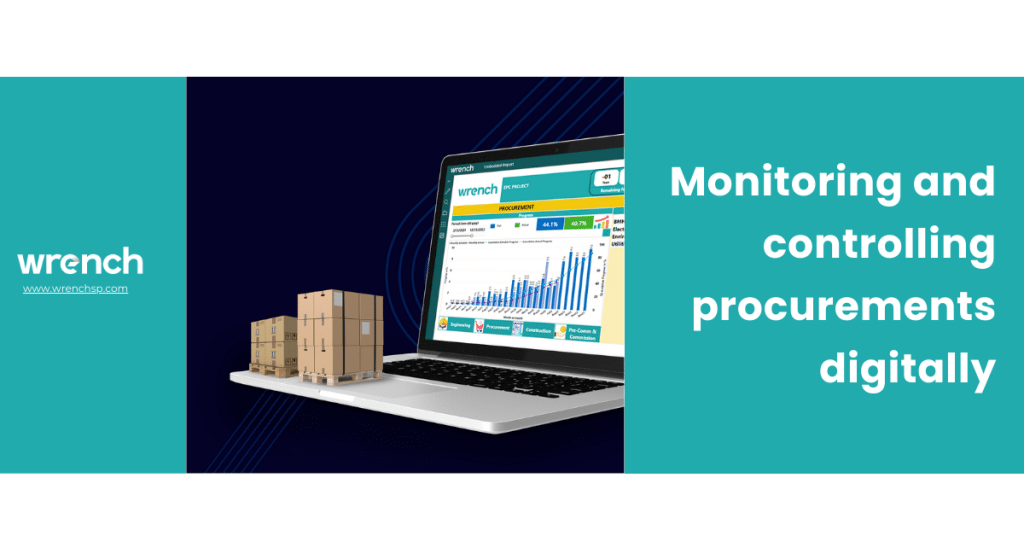The value of procured items in EPC (Engineering, Procurement, and Construction) projects can vary depending on project specifics, but typically, it ranges from 60% to 80% of the total project cost. Getting these procured items on or before the construction required date (CRD) within the right cost and time is critical to project success. The sheer volume of work and the number of stakeholders involved makes it complex. Trying to manage them manually is difficult and complex. This article shares how companies manage the procurement component of their projects, both pre-contract and post-contract digitally.
Work involved in both Pre-order and Post-order stages of EPC Projects
| Pre – Order | Post – Order |
| Scope definition | Supplier management |
| Market research | Quality assurance and control |
| Pre-qualification of suppliers | Material expediting |
| Request for Information (RFI) | Change management |
| Request for Proposal (RFP) | Invoicing and payment processing |
| Bid evaluation | Documentation and record keeping |
| Negotiation | Risk management |
| Contract formation | Claims management |
| Risk assessment | Project closeout |
| Legal and regulatory compliance | Lessons learned |
These activities, replicated for all high value / long lead items will give you an idea of the amount of work involved in procurement within EPC projects.
Collaborative Nature of Work
Another aspect of procurements which makes it time consuming is the sheer number of stakeholders involved. This calls for a high degree of collaboration among;
- Owners
- Project Management Consultants (PMC)
- Contractors
- Engineering team
- Procurement team
- Construction team
- Suppliers and vendors
- Project management team
- Regulatory authorities
- Finance department
- Quality assurance and control teams etc
Security Aspects
Procurement involve high degree of communication among stakeholders, and many of these stakeholders are external to the organisation. Wherever bidding process is involved, confidentiality hence security of information, is of paramount importance.
Contract Adherence
The most challenging and time consuming post-order activity in procurements is ensuring the adherence to contractual terms and conditions. Before issuing any payments, one has to ensure that all contractual conditions are met.
While most of these comes under the gamut of procurements, projects get heavily impacted when there are slippages and cost overruns.
Monitoring & Controlling Procurement Progress
Projects are effectively using the concepts of Earned Value Management (EVM) for monitoring and controlling procurement activities.
- Procurement schedule preparation
- Defining the rules of credit
- Measuring procurement progress using earned value management
- Planned Value (PV) – As per the schedule how much procurement work are we supposed to complete
- Earned Value (EV) – How much work did we complete
- Procurement Schedule Variance = EV-PV
- Procurement schedule performance index (SPI) = EV/PV
If project teams can regularly monitor the procurement schedule variance on a regular basis and take corrective and preventive actions on time, procurement delays and the associated project delays can be effectively controlled.
Monitoring & Controlling Digitally
The biggest challenge of monitoring and controlling procurement activities is to get the correct progress information on time. Delays in reporting and inaccuracy erode the effective monitoring and control of the procurement progress. This can be addressed only by digitalising the procurement work flows, both pre-order and post-order. Here are the steps involved;
- Digitalise the procurement workflows
- Define the rules of credit (indication of progress)
- Monitor and control procurement progress realtime digitally using digital dashboards
In conclusion, the digitalization of procurement workflows offers significant advantages in monitoring and controlling procurement activities within EPC projects. By leveraging digital technologies, organizations can streamline procurement processes, enhance transparency, and accuracy. Real-time visibility into procurement progress allows project teams to identify potential bottlenecks, mitigate risks, and optimize resource allocation. Moreover, digitalization enables better collaboration among stakeholders, facilitates compliance with regulatory requirements, and reduces administrative burdens associated with manual procurement tasks.
